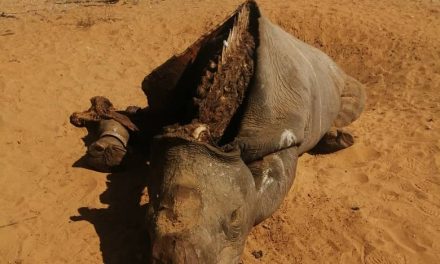
Can desert tracks ever be rehabilitated ?
The gravel plains of the central Namib are sensitive ecosystems that have been exposed to human disturbance since before the First World War. These disturbances have been increasing in intensity over the last few decades, mostly as a result of recreational off-road driving, exploration and prospecting activities.
The Namib Ecological Restoration and Monitoring Unit (NERMU) at Gobabeb Research Station convened a workshop on the rehabilitation of impact scars (vehicle tracks and laydown areas) in the Namib. In February, a number of scientists, environmental practitioners involved with arid landscape rehabilitation, representatives of film and mining companies and members of the Namibian Coastal Conservation and Management Project (NACOMA) got together at the Uranium Institute in Swakopmund.
More recently, increases in exploration drilling for uranium, mining and filming activities, mostly occurring in Protected Areas, have brought the issue of ecological rehabilitation of these surface scars into sharp focus. Initiatives such as the Strategic Environmental Assessment for the Uranium Rush and the draft Mine Closure Framework represented the first attempts at identifying this problem and at defining a framework for appropriate management.
Although many of the scars left by disturbances are probably permanent, it may be possible to rehabilitate the rest. A number of companies, using a variety of creative methods, have tried to rehabilitate the scars, usually with a view to re-create an aesthetically pleasing landscape with few visible signs of human disturbance. However, these attempts have seldom acknowledged the need to also consider the dynamics of the underlying gravel plain ecosystem.
Some companies, working with specialists, have indeed gone further and tried to address not only visual rehabilitation, but also the long term recovery of ecological structure, function and composition. Because many disturbances occur inside Protected Areas where biodiversity conservation is the primary goal, the challenge of achieving ecological recovery, and not just visible scar removal, is particularly big and important. Apart from the need to recover the critical processes that maintain the rich plant, invertebrate and reptile communities, if ecological recovery is not realized the ecotourism industry, which is based on natural, functioning landscapes, will not be guaranteed visually appealing vistas in the future.
The NERMU members said, Through this workshop NERMU hoped to start the process of solving the many problems caused by these disturbances (and the perceptions of things going off the rails) by having an intelligent and rational debate about it. There is no intention to prevent economic activities such as filming or mining if these help Namibia to grow economically; our best response is to make sure it is done responsibly and properly, and that we find ways by which biodiversity can coexist with humans.”
This workshop was the very first step in a long and largely unchartered process of developing a widely accepted best practice guideline for rehabilitation in arid environments. It provided a platform to all participants to understand the basic ecological framework of the Namib, and the complexity of rehabilitating an ultra-arid environment.












































